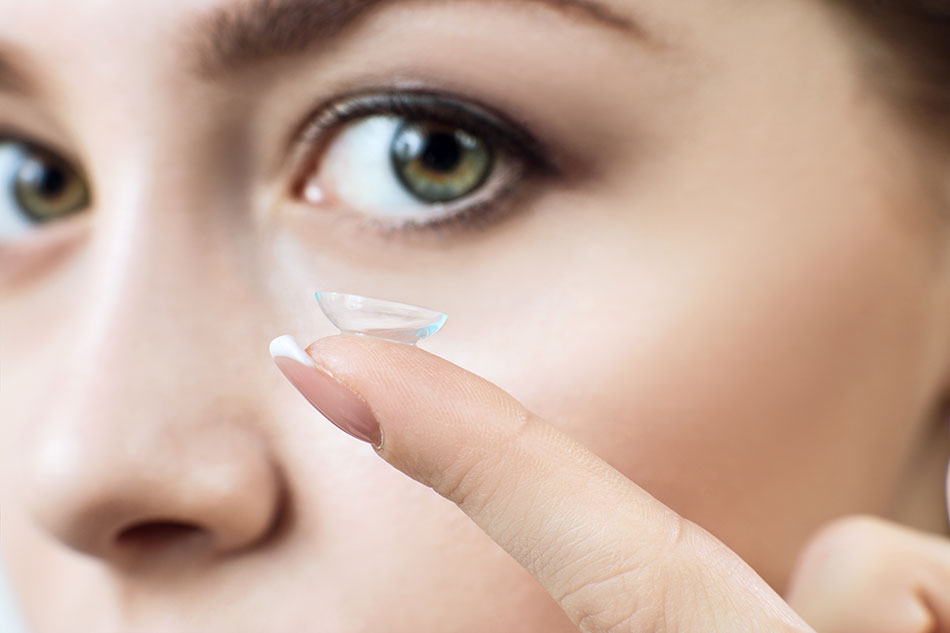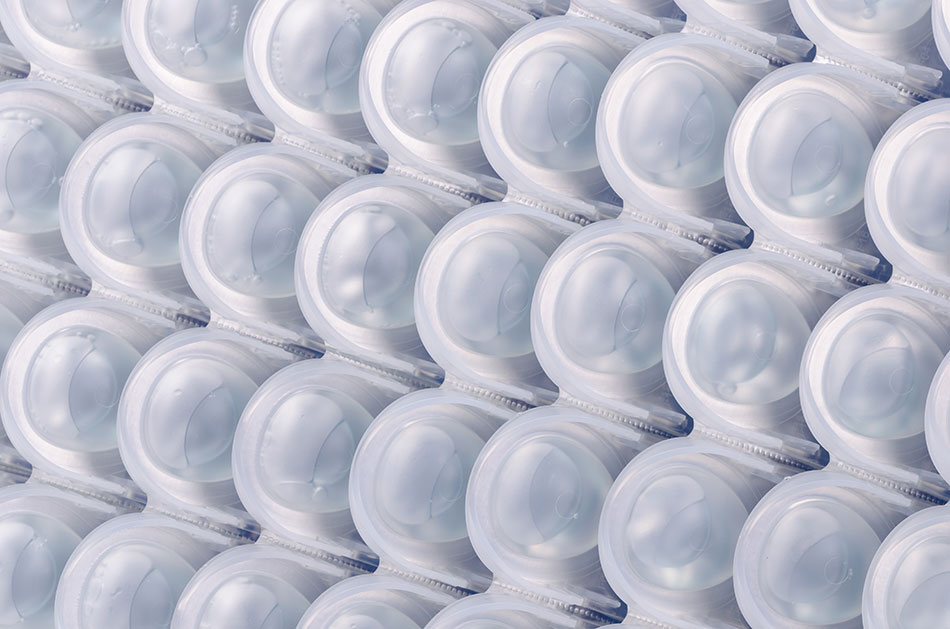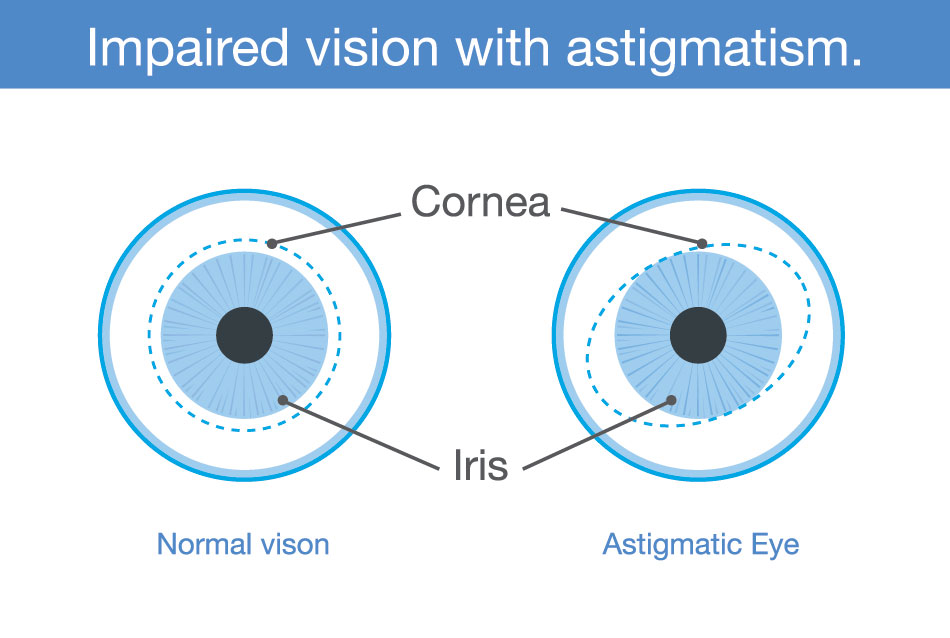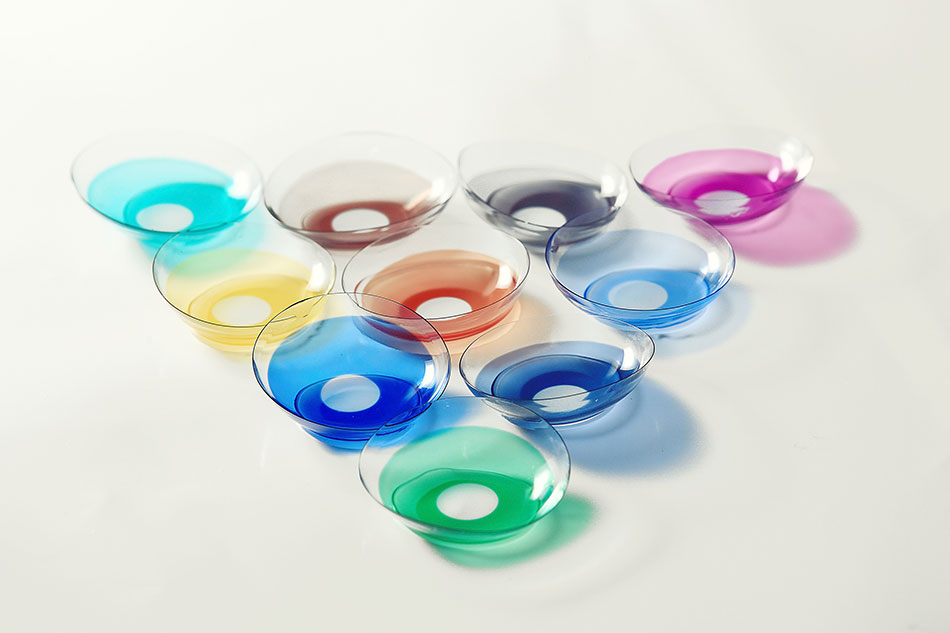A Guide to All the Different Types of Contact Lenses You Can Wear

Have you ever researched the different types of contact lenses that are available today? Figuring out what they are, who they are for and when to use them can be quite the task. Do you want dailies? Coloured? Toric? Monthly? Multifocal? Gas permeable? The list just goes on and on.
Of course, your eye doctor will help you decide what is best for your eyes, but it’s always good to know the different types of lenses available to you. Here is a basic run down.
Hard Lenses
Hard contact lenses were the first type of contacts available. They are made out of PMMA, or Plexiglass. Prior to the discovery of PMMA, contacts were made from regular hard glass. Very few people still use hard lenses today since they have poor oxygen flow. Additionally, rigid gas permeable lenses are much more comfortable.
Rigid Gas Permeable Lenses (RGP)
Rigid gas permeable lenses are a form of hard contacts. Made from rigid plastic and flexible silicone, these lenses allow more oxygen flow to the eye. RGP contacts are smaller than soft lenses, covering only about 75% of the cornea. They have essentially replaced PMMA contacts.
Disposable Soft Contact Lenses
In the 1960s, a new plastic called hydrogel was invented. Rather than make rigid lenses, this water-absorbing plastic resulted in the first soft lenses. Typically, soft contact lenses cover the entire cornea and some of the sclera. Instead of lasting long periods of time, these soft contacts are disposable. Users wear them anywhere from one day to one month.
Today’s hydrogel contacts contain between 40 to 80% water. The hydrogel in the lenses is either ionic or non-ionic. Non-ionic hydrogel soft contacts tend to attract fewer proteins, which means there’s less chance of buildup.
Here is a short history of disposable contact lenses:
- 1971: First soft contact lenses (made of hydrogel)
- 1987: First daily wear lenses (worn up to 18 hours a day)
- 1991: Daily wear two-week lenses (worn overnight)
- 1992: Tinted disposables (first soft contacts with colour)
- 1995: Daily disposable lenses (thrown away after each use)
- 1998: Multifocal disposable lenses (soft contacts for those who wear bifocals)
Daily Wear vs Daily Disposable Contact Lenses

Some people mistake daily wear for daily disposable contact lenses. Though both are soft contacts, they are very different.
Daily wear contacts are worn every day for up to 18 hours. The wearer cleans, sterilizes and stores the lenses at night.
Daily wear contacts have several different lens replacement schedules. These include:
- Weekly
- Bi-weekly
- Monthly
Conversely, daily disposable contacts last for one use only. The wearer inserts the lenses in the morning and throws them away at the end of the day. There are no cleaning or storage instructions because these contacts are not meant to be worn again.
Extended Wear Disposable Contact Lenses

Extended wear contacts are also soft contact lenses. But, the user wears these contacts all day and all night for a period of time. Some extended wear contacts last up to 30 days while others last only seven days.
But why don’t people just use their daily lenses overnight rather than pay for extended wear lenses? Because of oxygen levels. Daily lenses don’t provide enough oxygen to the eye to allow for 24-hour use.
If you were to wear daily lenses for an extended period of time, you could end up with:
- Irritation
- Dryness
- Itchiness
- Redness
- Swelling
- Blurry vision
Extended wear contacts are thinner and use silicone hydrogel, which is a more breathable material. This allows enough oxygen to flow through to the eye. Still, you should never wear your extended wear contacts for longer than recommended. If you do, you will have a much higher chance of developing more serious problems, such as keratitis.
Corrective Abilities of Different Types of Contact Lenses

For many years, only those with simple, straightforward prescriptions could wear contact lenses. But, with modern technology and materials, even those with complicated prescriptions now have choices. Let’s look at a few:
- Spherical contact lenses: These treat nearsightedness and farsightedness.
- Toric contact lenses: These lenses are cylindrical in shape and correct heavy astigmatism. They are usually weighted to keep the lenses in place for vision correction.
- Multifocal/bifocal contact lenses: Treat age-related farsightedness known as presbyopia. Each lens has two or more powers that allow those who typically wear bifocals to see clearly while wearing contact lenses.
- Monovision contact lenses: This allows each eye to have a different function. The dominant eye sees objects far away. The other sees objects close up. The brain then learns to adjust to monovision. This is another way to treat presbyopia.
Coloured Contact Lenses

Most contacts come with coloured options. Here are the three types your eye doctor might recommend:
- Visibility tint: These lenses have a slight blue or green tint. The purpose is not to change the colour of your eye, nor is the tint strong enough to. Instead, the tint helps you see the contacts as you put them in and take them out. It also makes it easier to see if the contact lens is in the case. Plus, you’ll find it easier if it has dropped on the counter or floor.
- Enhancing tint: These contacts have colour but are still see-through. The purpose of these lenses is to enhance your natural eye colour. So if you have light grey eyes, you can have darker grey eyes with an enhancing tint. Those with dark eyes cannot use this type of lenses because they are not dark enough to change the eye colour.
- Opaque tint: These are solid-coloured contact lenses with a clear center for the pupil. No matter what your natural eye colour is, the opaque lenses will mask it and change it to the new colour. Some manufacturers also provide custom colours, including costume and theatrical contacts.
Final Thoughts
Now that you’re all clued up on the many different types of contact lenses, you can choose the right ones for you. Nonetheless, be sure to see your eye doctor. He or she will give you a thorough exam and provide a prescription for the contact lenses best suited for your eyes and lifestyle.
